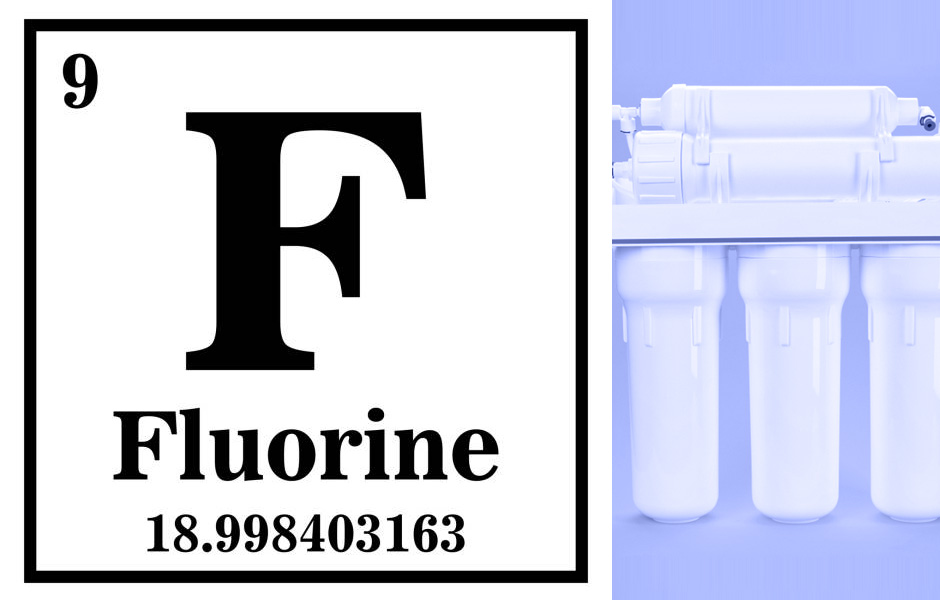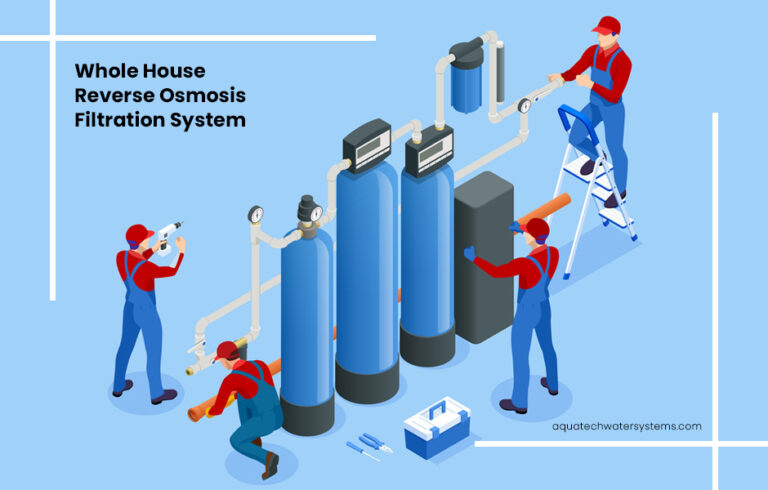Many people are concerned about the level of fluoride in their tap water. Fluoride is a mineral (chemical) that has been added to most American municipal water supplies for decades as an attempt to lower tooth decay. But why? Is it safe for us? What are the side effects? How can we remove excess fluoride from our drinking water supply?
While some people love its benefits, others are skeptical about how safe this additive is. If you are curious about whether or not reverse osmosis removes fluoride from your drinking water, keep reading!
Summary:
- Excess fluoride in drinking water has been linked with health risks, including dental fluorosis and bone fractures, and should not be consumed in large quantities.
- Reverse osmosis (RO) filtration systems remove all contaminants, including excess fluoride, chlorine, pharmaceuticals, heavy metals like lead and mercury, making it an effective way to clean up your drinking water.
What is fluoride?
Fluoride is a chemical element, or an ion of fluoride compound found naturally in groundwater. It easily dissolves in water and cannot be picked up through taste or smell, making this invisible chemical challenging to detect.
Fluoride compounds are also produced synthetically for use in pharmaceuticals, agricultural fumigants, and water fluoridation products, such as toothpaste and mouth rinses. In the US, most of the public water supplies contain added fluoride to help reduce tooth decay.
Since 1962, when the U.S. Public Health Service first recommended adding fluoride to drinking water, the Food and Drug Administration (FDA) has approved three additional fluoride supplements for use in U.S. drinking water:
Sodium Fluoride (NaF), Fluorosilicic Acid (H2SiF6), and Sodium Fluorosilicate (Na2SiF6).
These additives are commonly referred to as Silicofluoride, and they are the most widely used form of fluoride supplements added to drinking water today.
Why is fluoride added to water, and what are its effects?
People in the United States have been drinking fluoridated water for 75 years. The addition of fluoride to drinking water began after scientists observed that people who lived in areas where the natural level of fluoride in groundwater was higher and had fewer cases of tooth decay (also called dental caries).
According to the Centers for Disease Control and Prevention, drinking fluoridated water improves the health of your teeth and reduces dental cavities. Fluoride can also help prevent and even reverse early decay in children as well as adults. The CDC reported data from the National Health and Nutrition Examination Survey (NHANES) that shows a reduction in tooth decay among youth ages 12-15.
Fluoride works by making the outer layer of teeth (the enamel) harder. This protects the inner parts of the tooth (dentine and pulp), which contain small canals that connect to nerves. Fluoride prevents the acid produced by bacteria from dissolving the enamel on teeth, so it cannot reach and harm the dentine or pulp. Its action is topical, which means it works on the surface of teeth and does not enter the body in any significant quantity.
However, excess fluoride in drinking water has been linked with health risks, including dental fluorosis – a permanent change in tooth color and bone fractures when taken in large quantities.
With a reverse osmosis filter, you can get rid of the excess fluoride from your tap water, making it safe for drinking.
How does reverse osmosis remove fluoride?
Reverse osmosis is a process for purifying water by using a semi-permeable membrane to remove contaminants, such as lead and fluoride, from the source water. The process begins when the machine pushes the tap water through the membrane’s filters, which trap pollutants and other hard-to-remove materials such as lead and fluoride.
The RO water filter removes bacteria and other contaminants, while allowing only pure water to travel through to the other side of the membrane, which is clean and safe to drink.
Since a small quantity of fluoride is generally safe, RO water filters retain the required amount of fluoride, making it safe for drinking. A RO system will remove up to 85-90 percent of fluoride in your water supply and balances the right amount of minerals that the body needs.
Reverse osmosis systems for home use come in three formats:
- Under Sink RO: Consists of a designated faucet on the sink
- Countertop RO: Compact and sleek RO water purifier.
- RO Dispenser: Bottleless hot and cold water cooler, serving instant purified RO water.
All three options can be directly plugged onto your existing inline water source without the need for plumbing.
FAQs
Is there a safe or healthy level of fluoride consumption?
The U.S. Department of Health and Human Services recommends that fluoride intake be no higher than 0.05 milligrams per liter in drinking water. Levels higher than that are thought to increase your risk for tooth discoloration and other negative side effects without substantial additional benefits. The American Dental Association (ADA) recommends that the optimal level of fluoride in drinking water is 0.7-1.2 mg/L or parts per million (ppm). The Environmental Protection Agency’s maximum safe level is 4.0 ppm for short-term exposure and 2.4 ppm for long-term exposure.
Why should you drink fluoride-free water?
Fluoride in small quantities helps strengthen tooth enamel and prevent cavities. However, since we do not know the amount of fluoride in our drinking water, it is safe to remove it. Excess fluoride intake has been linked to lowered IQ, thyroid problems, fractures, and pain in bones and joints.
How much fluoride should you drink every day?
There are no studies that prove how much fluoride is too much for human consumption. It is safer to be cautious than sorry. Hence it would be ideal for you to drink water that contains no fluoride residue, as you get enough of it from other products like toothpaste, and natural sources, including tea, grapes, and seafood.
Is there a way to remove fluoride in tap water without RO?
While we do not have substantial proof to indicate that boiling water or other filtration methods (Distillation, UV, Carbon, etc.) remove fluoride from your tap water, the most effective way is to install reverse osmosis water filters. It removes 85%-90% of fluoride from your tap water.
How much will it cost to install a RO system?
The installation cost is determined by several criteria, including the filter you select, the faucet you choose, and the manufacturer. The typical cost of installing a RO system ranges from $500 to $1,000. Alternatively, you may also consider drinking water services for a low monthly rental fee to avoid making an upfront investment. The rental plan includes FREE annual servicing and filter replacements, unavailable when you buy a RO water filter.
Conclusion:
Reverse osmosis systems are an excellent solution for those who would not like to drink tap water because it contains fluoride, nitrates, or minerals. A RO water filtration system will remove up to 85-90 percent of the fluoride in your water supply and balance the right amounts of minerals. The benefits of an RO system go far beyond just removing contaminants from your drinking water; they also add value by providing pure, clean drinking water on demand without any hassle.




